| Weight | 1 lbs |
|---|---|
| Dimensions | 9 × 5 × 2 in |
| host | mouse |
| isotype | IgG1 |
| clonality | monoclonal |
| concentration | concentrate, predilute |
| applications | IHC |
| reactivity | human |
| available size | 0.1 mL, 0.5 mL, 1 mL concentrated, 7 mL prediluted |
mouse anti-BCL-2 monoclonal antibody (124) 6029
Price range: $160.00 through $528.00
Antibody summary
- Mouse monoclonal to BCL-2
- Suitable for: Immunohistochemistry (formalin-fixed, paraffin-embedded tissues)
- Reacts with: Human
- Isotype:IgG1
- Control: Tonsil or lymph node
- Visualization: Cytoplasmic
- 0.1, 0.5, 1.0 mL concentrated, 7 mL prediluted
mouse anti-BCL-2 monoclonal antibody 124 6029
| target relevance |
|---|
| Protein names Apoptosis regulator Bcl-2 |
| Gene names BCL2,BCL2 |
| Protein family Bcl-2 family |
| Mass 26266Da |
| Function FUNCTION: Suppresses apoptosis in a variety of cell systems including factor-dependent lymphohematopoietic and neural cells (PubMed:1508712, PubMed:8183370). Regulates cell death by controlling the mitochondrial membrane permeability (PubMed:11368354). Appears to function in a feedback loop system with caspases (PubMed:11368354). Inhibits caspase activity either by preventing the release of cytochrome c from the mitochondria and/or by binding to the apoptosis-activating factor (APAF-1) (PubMed:11368354). Also acts as an inhibitor of autophagy: interacts with BECN1 and AMBRA1 during non-starvation conditions and inhibits their autophagy function (PubMed:18570871, PubMed:20889974, PubMed:21358617). May attenuate inflammation by impairing NLRP1-inflammasome activation, hence CASP1 activation and IL1B release (PubMed:17418785). {ECO:0000269|PubMed:1508712, ECO:0000269|PubMed:17418785, ECO:0000269|PubMed:18570871, ECO:0000269|PubMed:20889974, ECO:0000269|PubMed:21358617, ECO:0000269|PubMed:8183370, ECO:0000303|PubMed:11368354}. |
| Subellular location SUBCELLULAR LOCATION: Mitochondrion outer membrane {ECO:0000269|PubMed:21358617, ECO:0000269|PubMed:2250705}; Single-pass membrane protein {ECO:0000255}. Nucleus membrane {ECO:0000269|PubMed:2250705}; Single-pass membrane protein {ECO:0000255}. Endoplasmic reticulum membrane {ECO:0000269|PubMed:21358617, ECO:0000269|PubMed:2250705}; Single-pass membrane protein {ECO:0000255}. Cytoplasm {ECO:0000250|UniProtKB:P10417}. |
| Tissues TISSUE SPECIFICITY: Expressed in a variety of tissues. |
| Structure SUBUNIT: Forms homodimers, and heterodimers with BAX, BAD, BAK and Bcl-X(L). Heterodimerization with BAX requires intact BH1 and BH2 motifs, and is necessary for anti-apoptotic activity (PubMed:25609812, PubMed:8183370). Part of a complex composed of SEPTIN4 isoform ARTS, XIAP and BCL2, within the complex interacts (via BH3 domain) with SEPTIN4 isoform ARTS and XIAP, SEPTIN4 isoform ARTS acts as a scaffold protein and stabilizes the complex (PubMed:29020630). Component of the complex, at least composed of LRPPRC, BECN1 and BCL2; the interactions prevent BECN1 from forming an autophagy-inducing complex with PIK3C3 (PubMed:23822101). Interacts with EI24 (By similarity). Also interacts with APAF1, BBC3, BCL2L1, BNIPL, MRPL41 and TP53BP2. Binding to FKBP8 seems to target BCL2 to the mitochondria and probably interferes with the binding of BCL2 to its targets. Interacts with BAG1 in an ATP-dependent manner. Interacts with RAF1 (the 'Ser-338' and 'Ser-339' phosphorylated form). Interacts (via the BH4 domain) with EGLN3; the interaction prevents the formation of the BAX-BCL2 complex and inhibits the anti-apoptotic activity of BCL2. Interacts with G0S2; this interaction also prevents the formation of the anti-apoptotic BAX-BCL2 complex. Interacts with RTL10/BOP. Interacts with the SCF(FBXO10) complex. Interacts (via the loop between motifs BH4 and BH3) with NLRP1 (via LRR repeats), but not with NLRP2, NLRP3, NLRP4, PYCARD, nor MEFV (PubMed:17418785). Interacts with GIMAP3/IAN4, GIMAP4/IAN1 and GIMAP5/IAN5 (By similarity). Interacts with BCAP31 (PubMed:31206022). Interacts with IRF3; the interaction is inhibited by Sendai virus infection (PubMed:25609812). Interacts with BECN1; thereby inhibiting autophagy in non-starvation conditions (PubMed:18570871, PubMed:21358617). Interacts with AMBRA1; thereby inhibiting autophagy (PubMed:21358617). {ECO:0000250|UniProtKB:P10417, ECO:0000269|PubMed:11463391, ECO:0000269|PubMed:12901880, ECO:0000269|PubMed:15547950, ECO:0000269|PubMed:15733859, ECO:0000269|PubMed:15849194, ECO:0000269|PubMed:17090549, ECO:0000269|PubMed:17418785, ECO:0000269|PubMed:18570871, ECO:0000269|PubMed:19228691, ECO:0000269|PubMed:19706769, ECO:0000269|PubMed:20849813, ECO:0000269|PubMed:21358617, ECO:0000269|PubMed:23055042, ECO:0000269|PubMed:23431138, ECO:0000269|PubMed:23822101, ECO:0000269|PubMed:25609812, ECO:0000269|PubMed:29020630, ECO:0000269|PubMed:31206022, ECO:0000269|PubMed:8183370, ECO:0000269|PubMed:8668206, ECO:0000269|PubMed:9305631}. |
| Post-translational modification PTM: Phosphorylation/dephosphorylation on Ser-70 regulates anti-apoptotic activity (PubMed:11368354). Growth factor-stimulated phosphorylation on Ser-70 by PKC is required for the anti-apoptosis activity and occurs during the G2/M phase of the cell cycle (PubMed:11368354). In the absence of growth factors, BCL2 appears to be phosphorylated by other protein kinases such as ERKs and stress-activated kinases (PubMed:11368354). Phosphorylated by MAPK8/JNK1 at Thr-69, Ser-70 and Ser-87, which stimulates starvation-induced autophagy (PubMed:10567572, PubMed:18570871). Dephosphorylated by protein phosphatase 2A (PP2A) (By similarity). {ECO:0000250|UniProtKB:P10417, ECO:0000269|PubMed:10567572, ECO:0000269|PubMed:18570871, ECO:0000303|PubMed:11368354}.; PTM: Proteolytically cleaved by caspases during apoptosis. The cleaved protein, lacking the BH4 motif, has pro-apoptotic activity, causes the release of cytochrome c into the cytosol promoting further caspase activity. {ECO:0000269|PubMed:9395403}.; PTM: Monoubiquitinated by PRKN, leading to an increase in its stability (PubMed:20889974). Ubiquitinated by SCF(FBXO10), leading to its degradation by the proteasome (PubMed:23431138). Ubiquitinated by XIAP, leading to its degradation by the proteasome (PubMed:29020630). {ECO:0000269|PubMed:20889974, ECO:0000269|PubMed:23431138, ECO:0000269|PubMed:29020630}. |
| Domain DOMAIN: BH1 and BH2 domains are required for the interaction with BAX and for anti-apoptotic activity. {ECO:0000269|PubMed:8183370}.; DOMAIN: The BH4 motif is required for anti-apoptotic activity and for interaction with RAF1 and EGLN3.; DOMAIN: The loop between motifs BH4 and BH3 is required for the interaction with NLRP1. {ECO:0000269|PubMed:17418785}.; DOMAIN: The BH3 domain is required for interaction with SEPTIN4 isoform ARTS and thereby for XIAP-mediated ubiquitination and subsequent induction of apoptosis. {ECO:0000269|PubMed:29020630}. |
| Involvement in disease DISEASE: Note=A chromosomal aberration involving BCL2 has been found in chronic lymphatic leukemia. Translocation t(14;18)(q32;q21) with immunoglobulin gene regions. BCL2 mutations found in non-Hodgkin lymphomas carrying the chromosomal translocation could be attributed to the Ig somatic hypermutation mechanism resulting in nucleotide transitions. {ECO:0000269|PubMed:2875799, ECO:0000269|PubMed:3285301}. |
| Target Relevance information above includes information from UniProt accession: P10415 |
| The UniProt Consortium |
Data
Publications
| pmid | title | authors | citation |
|---|---|---|---|
| We haven't added any publications to our database yet. | |||
Protocols
| relevant to this product |
|---|
| IHC |
Documents
| # | SDS | Certificate | |
|---|---|---|---|
| Please enter your product and batch number here to retrieve product datasheet, SDS, and QC information. | |||
Only logged in customers who have purchased this product may leave a review.
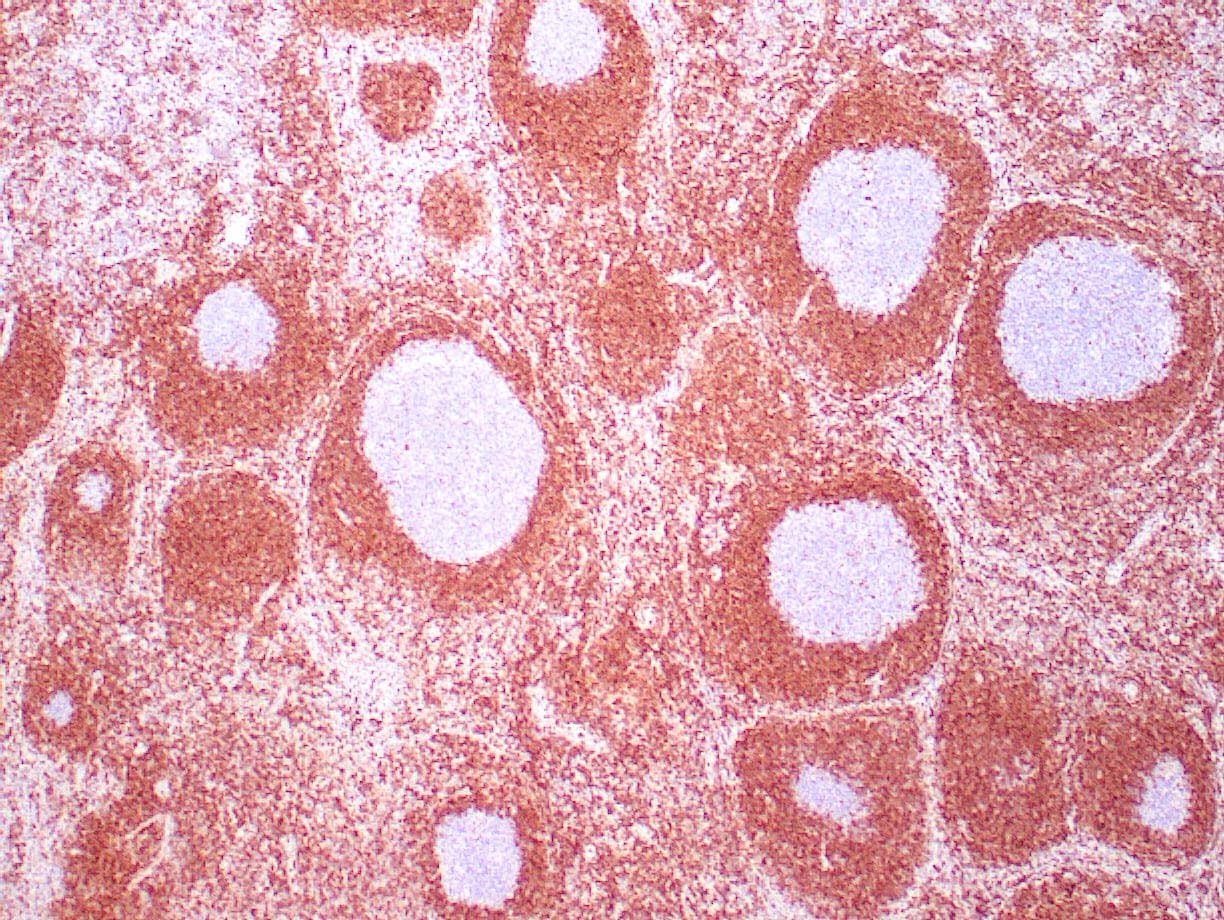
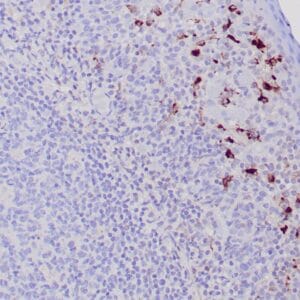

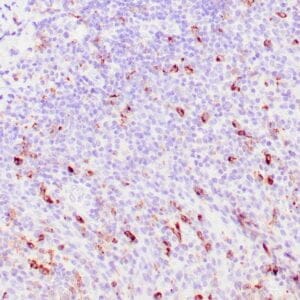
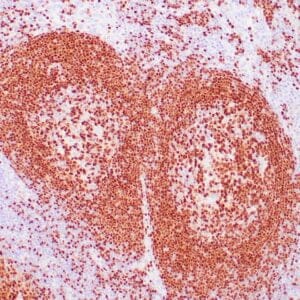
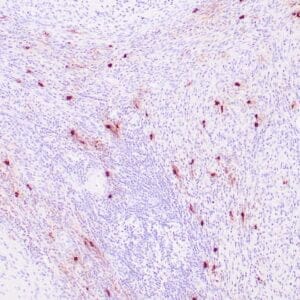
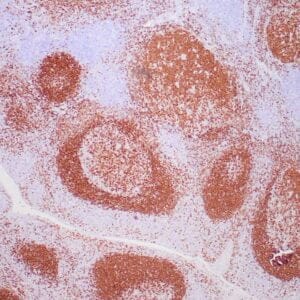
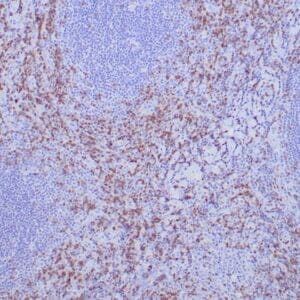
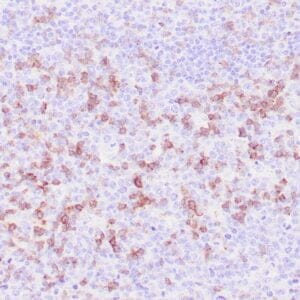
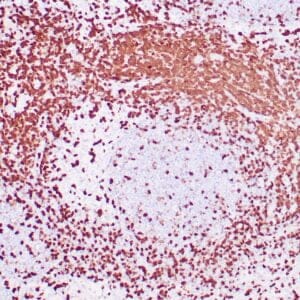
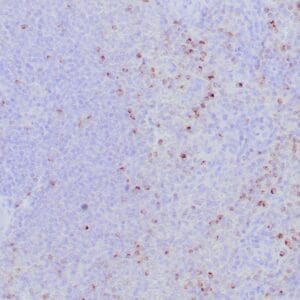
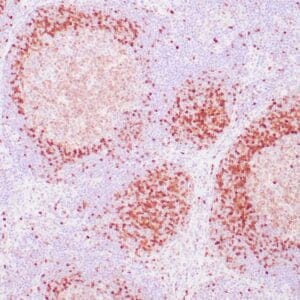
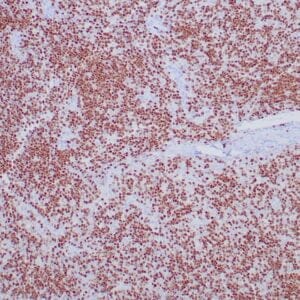
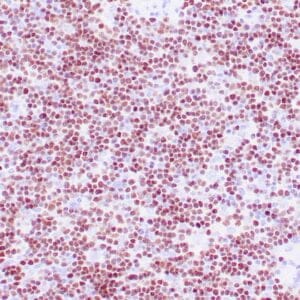
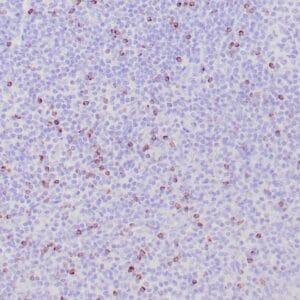
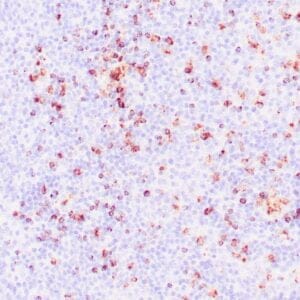
Reviews
There are no reviews yet.